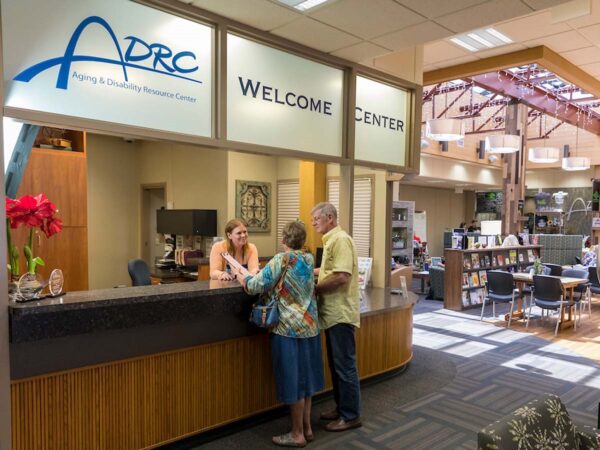
Wisconsin’s Aging & Disability Resource Centers (ADRCs) were created in 1998 expressly to support older adults, adults with disabilities, and high school students with disabilities who are transitioning out of school. The Council maintains a strong relationship with Wisconsin’s ADRC network, with lines of communication in place to ensure that older individuals experiencing vision loss can access the array of supports and benefits available to them.
Located across the state, ADRCs are often a great first stop for older adults; people with disabilities; and their families, friends and caregivers. Health and Wellness workshops offer valuable information. Elder and Disability Benefit Specialists provide information, education and advocacy for a variety of programs such as Medicaid, Medicare, prescription drug assistance and benefit appeals. Information and Resource Specialists help identify local services, resources and benefits such as:
- Adaptive equipment and equipment lending
- Caregiver support
- Dementia care services and support
- Health, nutrition, and home-delivery meal programs
- Housekeeping and chore services
- Housing options
- In-home personal care and nursing
- Long-term care programs
- Safety updates to the home
- Transportation
- Wellness programs
ADRCs are able to access interpreters, including those fluent in American Sign Language. There is no cost for the confidential services provided by the ADRC.
Every county, or in some cases a group of counties, is served by an ADRC. You may call them, schedule a home visit, or visit a local ADRC office. You can find the ADRC that serves your county online.
Some Native tribes in Wisconsin partner with a Wisconsin county for ADRC services, while others offer services through a Tribal Aging and Disability Resource Specialist (ADRS). You can learn more about how the different tribes serve these populations online.

